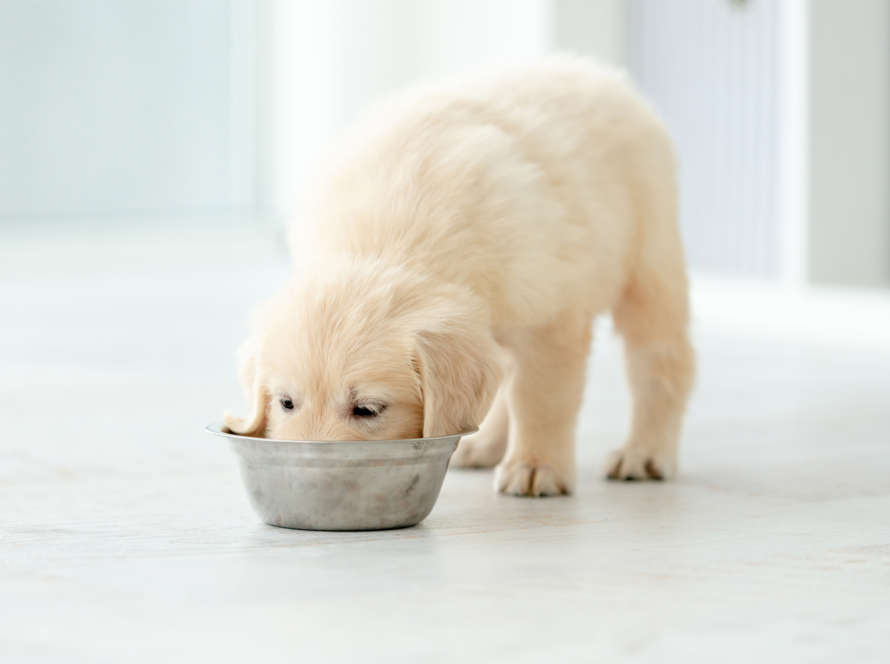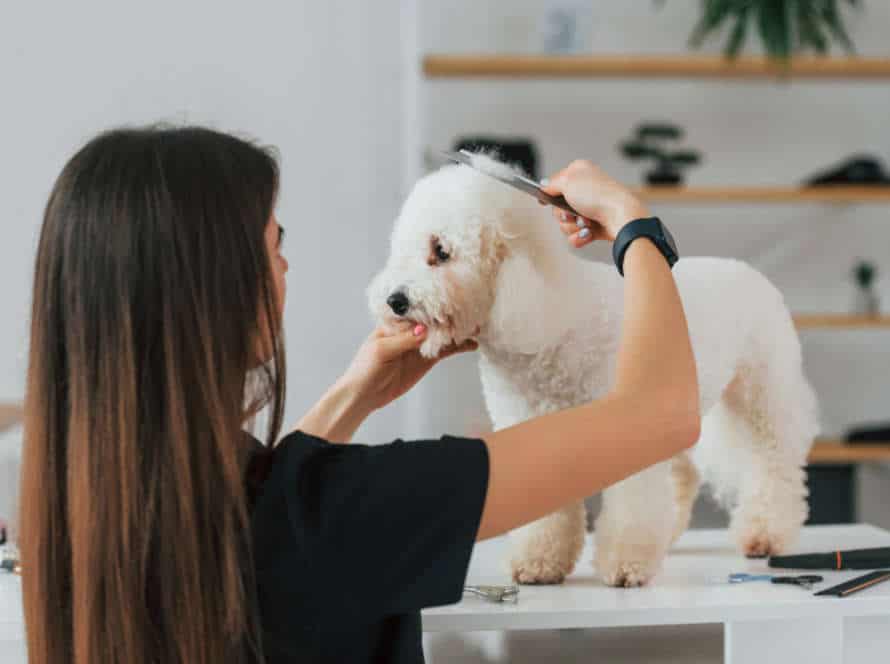Better Training Results with Positive Reinforcement: Here’s Why
Positive reinforcement is an awesome way to train pets and animals. Reward desired behavior rather than punishing what’s not wanted. Here’s why it’s so great:
- Strengthens the bond between pet and owner. Positive reinforcement forms a positive connection when training.
- Encourages voluntary behavior. Pets will willingly do desirable actions to get rewards, not from force.
- Makes a happy and positive environment. Reduces stress, anxiety, and aggression with positive reinforcement.
Pro tip: Use meaningful and immediate rewards to make the desired behavior stick.
Understanding Positive Reinforcement
Positive reinforcement is essential for operant conditioning – a type of learning where behaviour is modified by consequences. It is an important driver of behaviour change and can be used to train animals and humans. Let’s explore the key principles of positive reinforcement and why it works so well!
Definition of Positive Reinforcement
Positive reinforcement is a technique used in operant conditioning. It encourages desired behavior by providing rewards. This can be verbal praise, treats, toys and other incentives the individual or animal likes.
It creates positive associations with the desired behavior. This helps foster a sense of accomplishment, confidence and motivation.
Positive reinforcement is powerful in animal training. It can teach basic and complex behaviors. It is effective in dogs and other animals, without the need for physical punishment or dominance-based training.
Pro tip: Maximize the effectiveness of positive reinforcement by giving the reward immediately after the desired behavior and use high-value treats or incentives the individual finds particularly rewarding.
The Science behind Positive Reinforcement
Positive reinforcement is a useful tactic. It links a desirable behavior to a pleasant outcome, making it more likely to be repeated. The science behind it? It releases dopamine – a chemical associated with pleasure and reward – in the brain when the behavior is reinforced. This reinforces neural connections, making it automatic and more likely to be repeated.
This tool works on both animals and humans. It produces better results, increases motivation and creates a positive, trust-filled environment.
The Benefits of Positive Reinforcement
Positive reinforcement is a powerful tool for many areas of life. It rewards desired behavior, instead of punishing unwanted behavior. Here are some of its benefits:
- Quicker learning & better skill retention: Positive reinforcement is a great training technique.
- More motivation: Rewards like treats, praise, or playtime encourage people/animals to repeat the behavior that earned it.
- Builds trust & respect: Positive reinforcement helps create a good bond between the trainer and the learner.
- Enhances self-esteem: Acknowledging desired behavior boosts self-confidence & gives a more positive outlook.
Pro Tip: When using positive reinforcement, make sure to clearly define the behavior, use meaningful rewards, and be consistent.
Using Positive Reinforcement in Training
Positive reinforcement is a fantastic method of training animals and people. It creates an excellent atmosphere for learning, motivates the learner to take initiative and strive further. Stress is also reduced for both the trainer and learner, leading to improved results. Let’s explore how positive reinforcement affects training!
Goal Setting and Rewards
Setting goals and rewards are key parts of positive reinforcement training. It helps get better results when training pets or animals. Do this:
- Set achievable objectives for your pet. For example, tricking, following a command, or doing a task.
- Reward with treats, words of praise, or toys, to motivate and encourage desired actions.
- Progressively make the goals tougher as your pet masters the ones it knows.
- Consistently give rewards for good behavior. Don’t use punishment or negative reinforcement as it won’t work.
- Positive reinforcement builds trust and strengthens the bond between you and your pet. So, you can get the desired results in training.
Tip: Reward with what your pet likes. Use them regularly to reward good behavior.
Timing and Consistency
Timing & consistency are key to using positive reinforcement in animal training. You must give the reinforcement quickly, within 1-2 seconds of the desired behavior. This will help the animal understand what they should be doing. Make sure to be consistent every time the animal does the desired behavior.
Positive reinforcement is a great way to teach animals new behaviors without fear or anxiety. When you give quick and consistent reinforcement, animals can learn with ease and enthusiasm.
Pro Tip: Use high-value rewards for more challenging behaviors. Gradually replace them with verbal praise or physical affection once the behavior is learned.
Reinforcing Good Behavior
Positive reinforcement is a great way to motivate good behavior in dogs. It’s a method that encourages dogs to repeat good behaviors by rewarding them with something they enjoy. Here’s why it works:
- Builds strong bonds between pet and owner.
- Helps dogs learn quickly and effectively.
- Prevents unwanted behaviors.
- Reduces stress when training.
Using positive reinforcement is easy. You can reward your pup with a treat, praise, or toy. This technique will give you better results and create a positive environment. Ultimately, your pup will feel happy and more secure.
Positive Reinforcement vs Punishment
Training a pup or pooch can be tough. Traditional methods tend to use punishment to help them learn. But, positive reinforcement can be more successful and efficient! Let’s explore how and why it works better than punishment. Plus, why it’s more beneficial.
Negative Effects of Punishment
Punishment is often used to train, but it can have bad effects on the recipient’s behavior and well-being. Positive reinforcement has been found to work better.
Negative effects of punishment:
- Fear and anxiety: Punishment can cause fear, leading to stress.
- Aggression: Punishment can worsen aggressive behavior, in the short and long term.
- Avoidance and escape: Instead of learning good behaviors, the recipient may focus on avoiding punishment.
- Undermining trust and communication: Punishment can make trainer and recipient adversaries, blocking the growth of trust and communication.
Positive reinforcement rewards desired behaviors, making the learning experience happier. It increases motivation, strengthens trust, and boosts the recipient’s natural urge to learn and improve. It leads to positive emotions, resulting in long-term behavior changes and better training results.
Pro tip: When teaching an animal or a person, focus on promoting good behaviors with positive reinforcement. This creates a healthy learning environment and strong bond between trainer and recipient.
The Case for Positive Reinforcement
When it comes to dog training, positive reinforcement is better than punishment-based methods. Reward desired behaviors instead of punishing undesired ones.
Positive reinforcement has many benefits:
- Strengthens the bond between you and your pup.
- Increases motivation. Treats & positive attention make them more eager to act.
- Reduces anxiety & stress. Punishment can have the opposite effect.
- Encourages better behavior. When good behavior is rewarded, it’s more likely to last.
So, if you want to train your dog in a loving, safe and effective way, go for positive reinforcement!
Combining Both Methods
Training your pet? Combining positive reinforcement and punishment can be great. Positive reinforcement involves treats, praise, and love. Punishment uses fear or discomfort to stop bad behavior.
Why positive reinforcement is better:
- It builds trust and respect, and creates a positive learning environment.
- Punishment can cause fear, aggression, and bad habits.
Positive reinforcement rewards good behavior. This encourages them to do it again to get more rewards. Combining the two methods will reduce negative behavior and create a better pet.
Pro tip: Stay patient and consistent. It takes time and effort to get the desired results, but it is worth it.
Common Mistakes in Using Positive Reinforcement
Positive reinforcement is a great training aid. It works wonders when used right, but misuse can lead to undesirable outcomes. To prevent this, here are some errors to dodge when using positive reinforcement.
Over-Reinforcing or Under-Reinforcing
Too much reinforcement or too little reinforcement are common mistakes when training your pet with positive reinforcement. This can lead to undesirable outcomes.
Over-reinforcement happens when you reward your pet for every behavior, even those that don’t need it. This causes your pet to only do the behavior if given a reward.
Under-reinforcing is when you don’t reward your pet enough for the desired behavior. This makes your pet lose interest in the behavior and they won’t do it as often.
Find the right balance between rewarding your pet for good behavior and not rewarding them for bad behavior. Begin by rewarding your pet each time they do the desired behavior. Gradually reduce the rewards as they become more consistent.
Positive reinforcement is a powerful tool. But, it must be used correctly to get the desired results.
Inconsistency in Rewarding
Inconsistent rewarding is a common mistake when using positive reinforcement for training. It’s powerful, but only if used right and consistently. This can cause confusion and frustration for your pet and undo your training.
To avoid this:
- Pick a behavior. Make sure everyone knows it.
- Choose the correct reward and make sure it’s consistent and specific.
- Deliver the reward immediately after the behavior occurs and offer praise too.
- Reward every time the behavior happens, so they learn to link it to the reward.
Remember, positive reinforcement is useful, but must be used correctly and consistently for the best results. Pro Tip: Use a clicker or a marker word like “yes” to make it more consistent.
Not Adjusting to Changes in Behavior
Making adjustments to positive reinforcement when training is a common mistake. Positive reinforcement is great for creating new behavior, but behavior isn’t always static.
Take dogs, for example. Initially they may respond to a treat or toy as a reward, however, over time they may lose interest. The same goes for verbal praise or physical affection. If the reward isn’t motivating enough, the dog won’t repeat the desired behavior.
Therefore, it’s necessary to adjust. Switch up rewards or adapt techniques. Pay attention to what motivates your pet. Be ready to change if their behavior or response shifts. This will help with successful training and a strong bond between you and your pet.
Best Practices for Successful Positive Reinforcement
Positive reinforcement is significant for better training outcomes. Used accurately, it can fuel motivation and engagement, develop skills and behaviors, and construct a bond of trust and respect between the trainer and the trainee. Let’s check out the best techniques for successful positive reinforcement.
Setting Clear Expectations
For great training results, setting expectations is a must. Define which behaviours you want to reward and encourage. Here are the best practices for setting clear expectations:
- Clearly define what behaviour you want your pet to do. Eg. If teaching your dog to sit, you must define what ‘sit’ means.
- Decide what your pet needs to do to get the reward. Eg. Sit for one minute before getting a treat.
- Use rewards meaningful to your pet. Eg. Treats, toys or praise.
- Be consistent in rewarding desired behaviour. Inconsistency can lead to confusion and reduce training effectiveness.
By setting expectations, you can help your pet become a well-behaved family member. Celebrate successes with enthusiasm and your pet will be encouraged to repeat the behaviour.
Choosing the Right Rewards
Choosing the right rewards is key to successful training. Here are some best practices:
- The reward should be meaningful to the learner.
- Mix up the rewards – same reward can lose effectiveness.
- Time it right – give the reward after the desired behavior.
- Reward effort and progress.
Pro tip: Track what works best for each learner. Customize rewards to max positive reinforcement.
Incorporating Positive Reinforcement into Daily Training.
Positive reinforcement can boost your training results. It motivates learners and builds their trust.
Here are the best practices to use:
- Be precise about the behaviour you want to reinforce.
- Speak in a positive tone when you reward the behaviour.
- Reinforce the behaviour straight away.
- Vary the rewards to keep motivation high.
- Don’t reinforce the wrong behaviour or send mixed messages.
Using positive reinforcement correctly makes training more enjoyable and productive for you and your learners.
Frequently Asked Questions
1. What is positive reinforcement and how does it help in training?
Positive reinforcement involves rewarding desirable behavior to encourage its repetition. It works by associating the behavior with a positive outcome, which in turn increases the likelihood of that behavior being repeated in the future. This method of training helps create a positive learning environment, where individuals are motivated to learn and achieve better results.
2. What are the benefits of using positive reinforcement in training?
Positive reinforcement helps increase motivation, engagement and satisfaction in training. It encourages individuals to take an active role in their own learning and creates a sense of accomplishment when they achieve their goals. Positive reinforcement also helps in retaining information and increasing overall performance.
3. Can positive reinforcement be used in all types of training programs?
Yes, positive reinforcement can be used in all types of training programs. It is a universal principle of learning and can be applied to any type of training, from sports coaching to workplace training programs.
4. How does positive reinforcement differ from punishment-based training methods?
Positive reinforcement focuses on rewarding desirable behavior, while punishment-based training methods focus on punishing undesirable behavior. Punishment-based methods can create a negative learning environment, causing individuals to become discouraged and less motivated in their learning. Positive reinforcement, on the other hand, creates a positive environment that encourages individuals to take an active role in their own learning.
5. How do you implement positive reinforcement in training?
Positive reinforcement can be implemented by identifying and rewarding desirable behavior consistently. This can be in the form of praise, recognition, or other types of rewards that are meaningful to the individuals involved. It is important to provide feedback regularly and ensure that rewards are consistent and aligned with the goals of the training program.
6. Can positive reinforcement be used to overcome negative behavior patterns?
Yes, positive reinforcement can be used to overcome negative behavior patterns by identifying and rewarding positive behavior that is opposite to the negative behavior. This can help create new positive habits, which in turn can help overcome negative behavior patterns over time.







